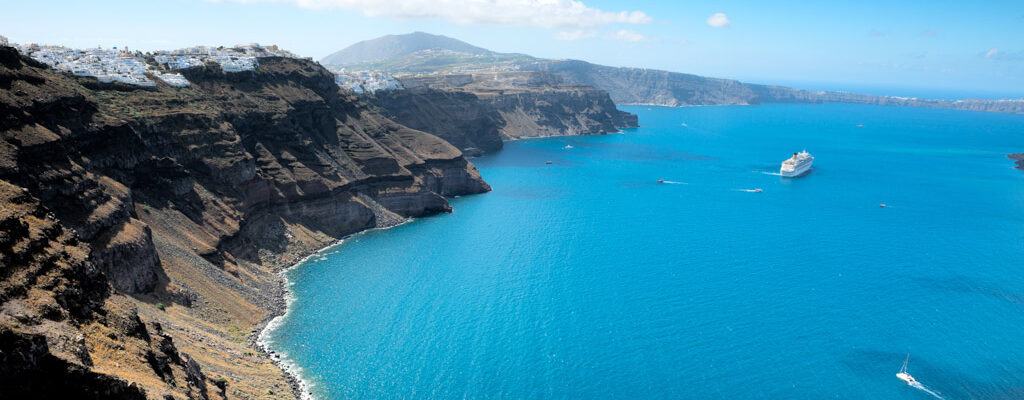Santorini is a masterpiece. There’s nothing as unique as this magnificent Cycladic island. Its whitewashed, cube-like houses and blue-domed churches may captivate the eye, but the true soul of the island lies deep beneath the caldera. Its essence is rooted in the whispers of an ancient civilization that once thrived beneath layers of ash. Santorini is a destination where volcanic tragedy gave birth to timeless beauty—a place where millions of travelers from every corner of the globe come each year, drawn to its wonder and its enduring allure. Let’s discover what makes Santorini so unique.

Santorini: The Volcano That Forged a Legend
Roughly 3,600 years ago, a cataclysmic volcanic eruption—among the most powerful in recorded history—shattered the island once known as Strongyli (“the round one”), forming the dramatic caldera that defines Santorini’s geography today. This Minoan eruption sent shockwaves across the Aegean, likely inspiring the legend of Atlantis and bringing an abrupt end to thriving Bronze Age settlements.
What remains today is a crescent-shaped embrace of land, surrounding a sunken volcanic heart. The volcano is still active, quietly simmering beneath the surface, with Nea Kameni and Palea Kameni as its recent offspring.
Akrotiri: The Bronze Age Pompeii
Beneath layers of volcanic ash, archaeologists uncovered Akrotiri—a remarkably advanced Bronze Age settlement, often referred to as the “Minoan Pompeii.” Dating back to the 16th century BCE, Akrotiri reveals multistoried buildings constructed with stone and clay, intricate drainage and sewage systems that rival some modern designs, storerooms filled with large pithoi (storage jars), elegant pottery, and vivid frescoes that breathe life into a civilization frozen in time. This Minoan-influenced city reflects the intellectual and artistic brilliance of a society that flourished long before the dawn of modern tourism.
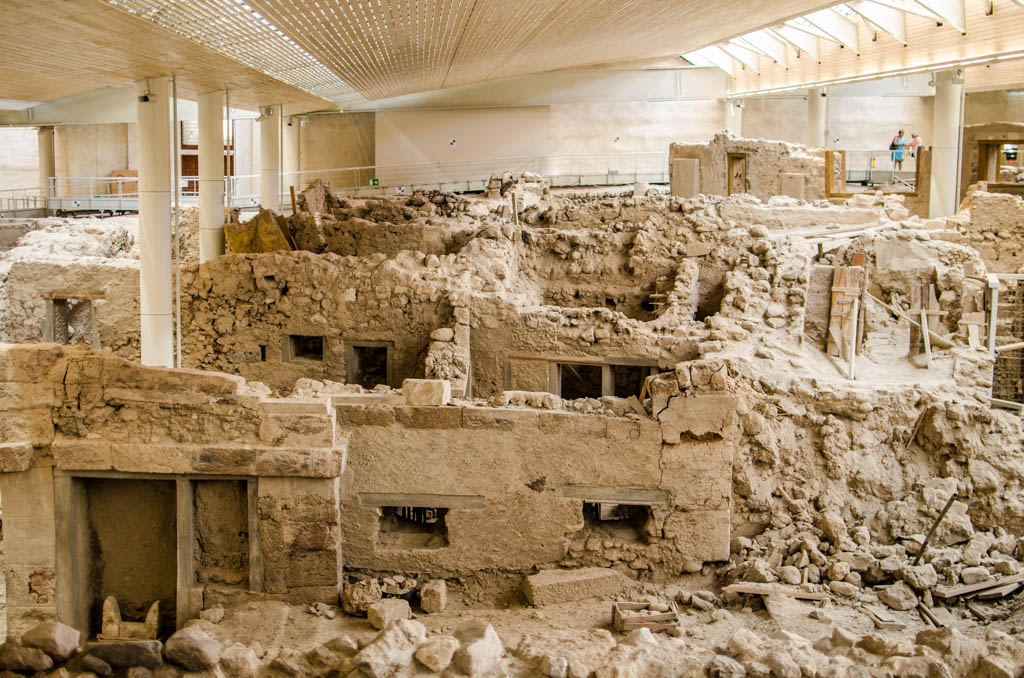
Today, the archaeological site is a thoughtfully transformed state-of-the-art, bioclimatic museum space, sheltered beneath a vast, light-filtering roof. It offers a comfortable experience, especially during warmer summer days. An intuitive circular route that wraps around the ancient ruins offers elevated walkways and platforms for a close yet respectful view of this time capsule.
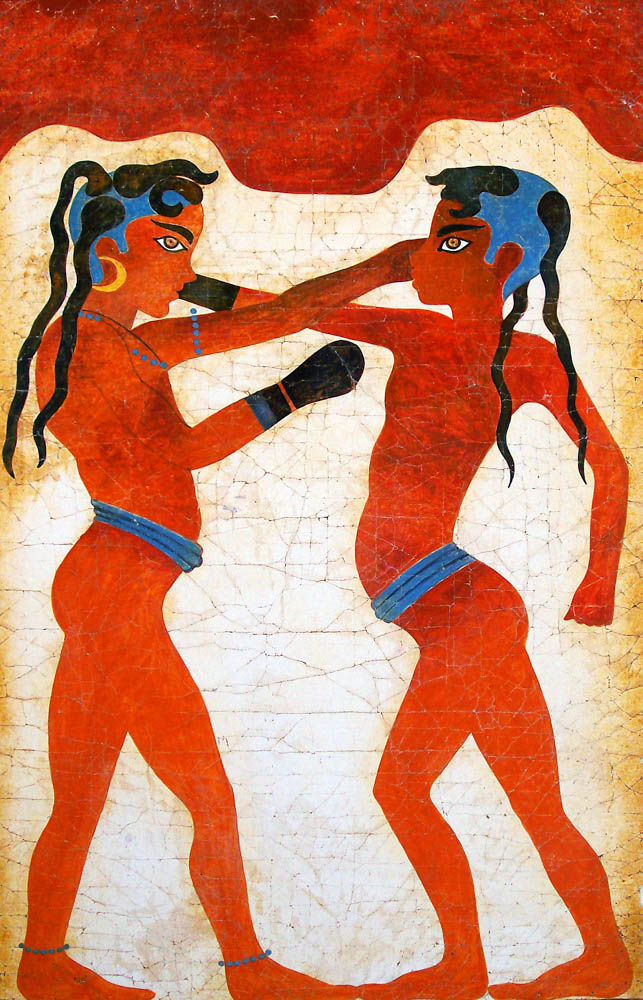
Unlike in Pompeii, no bodies were found here, suggesting that a well-organized evacuation had taken place. What’s especially striking is the sight of bed frames standing out in the open, as if the residents saw something coming. This mysterious disappearance, preserved in ashen stillness, offers a glimpse into the brilliant intellect and complexity of this early Aegean society.
Among Akrotiri’s most treasured legacies are its elaborate frescoes—astonishingly vibrant wall paintings that have survived for millennia, offering a window into the aesthetic soul of a vanished civilization. Many of these masterpieces are housed in the Museum of Prehistoric Thera on Santorini, while some of the most complete and celebrated scenes now reside in the National Archaeological Museum of Athens.
A Gastronomic Landscape of Volcanic Bounty
Santorini’s mineral-rich soil defines its cuisine, while scarcity, intense sun, and lava-drenched terroir shape its distinctive flavors. Farmers don’t just cultivate crops here—they forge them against the wind, the stone, and the silence of the land. The island proudly produces several star products:
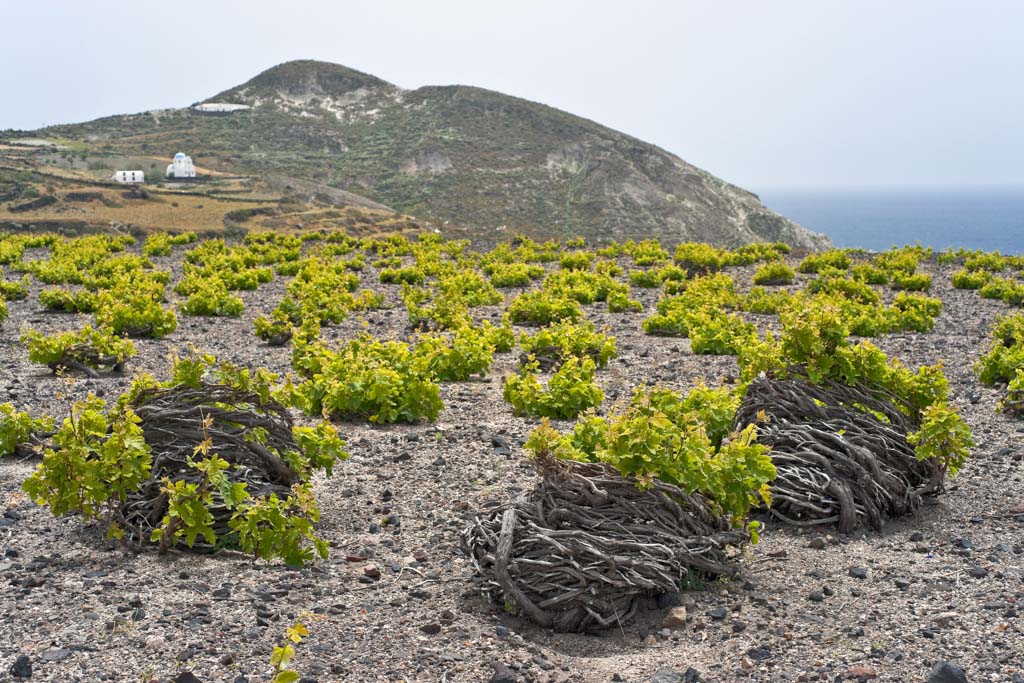
PDO Wine: The Assyrtiko grape is Santorini’s crown jewel, grown in basket-shaped “kouloura” vines to shield it from fierce winds. Wines are crisp, mineral-forward, and deeply rooted in history. Vinsanto—sun-dried and golden—is a sacrosanct expression of time in a glass.
 Santorini Fava (Lathyrus clymenum): This yellow split pea has been cultivated for over 3,500 years and is a Protected Designation of Origin product. It is mashed into a velvety purée and topped with olive oil and lemon, a humble dish that you’ll come across in the appetizer section of every menu.
Santorini Fava (Lathyrus clymenum): This yellow split pea has been cultivated for over 3,500 years and is a Protected Designation of Origin product. It is mashed into a velvety purée and topped with olive oil and lemon, a humble dish that you’ll come across in the appetizer section of every menu.
Cherry Tomato: Small, sweet, and intensely flavored, Santorini’s cherry tomato is a relic crop, grown without irrigation. Used in “domatokeftedes” (tomato fritters), it captures the very soul of the island’s sun and soil.
Thirasia: Santorini’s Timeless Mirror
Across the caldera lies Thirasia, Santorini’s quieter twin. This is what Santorini might have been, had tourism not carved its way through cliffside villages. Thirasia offers a tranquil, authentic escape, with just a few hundred residents—an untouched counterpoint for those who seek time travel over Instagrammable vistas.
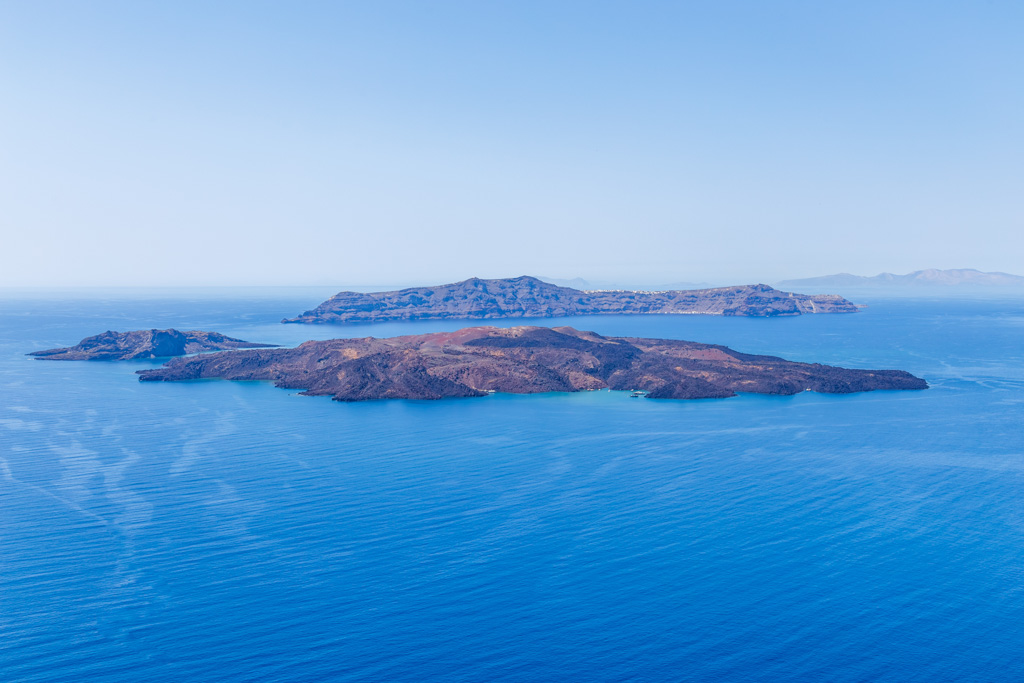
Wander its sleepy villages, hike the winding path to Manolas, and feel the stillness of an island where the echoes of the past outshine the sounds of today.
Tomato Industrial Art: The Tomato Art Factory
Located in Vlychada, the Tomato Industrial Museum, D.Nomikos is one of Santorini’s most unexpected gems. Housed in a restored 1945 tomato processing plant, the museum offers a rare glimpse into the agricultural and industrial heart of the island. Through interactive exhibits and rotating art shows, it honors the story of the humble tomato—once the economic lifeblood of Santorini before tourism took over.
It’s also a vibrant cultural hub, hosting summer concerts, exhibitions, and workshops. A space where art meets agriculture in both a nostalgic and avant-garde way.
Red Bull Art of Motion Competition
From 2011 to 2017, gravity-defying athletes gathered on the rooftops of Oia and Fira for the legendary Red Bull Art of Motion, transforming Santorini’s cascading architecture into a breathtaking parkour stage. With domes, terraces, and cliffside paths as their canvas, these freerunners turned movement into art—dancing on the edge of volcanic cliffs and leaping through Cycladic dreamscapes.
The Red Bull Art of Motion began on October 6, 2007, in Vienna, Austria, and has since evolved into a global celebration of movement, creativity, and human potential. Santorini remains one of its most iconic stages, where the raw power of athleticism met the breathtaking beauty of the island’s landscape.
Santorini is not merely a destination—it is a living allegory. Come here to taste its legacy in a glass of Assyrtiko, and to hear whispers of Akrotiri in the wind. It’s world-famous for a reason, because it welcomes you into its myth!

